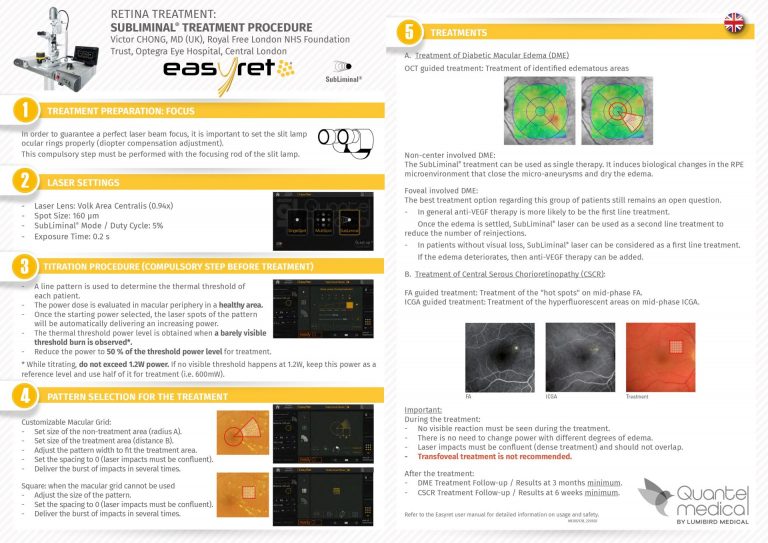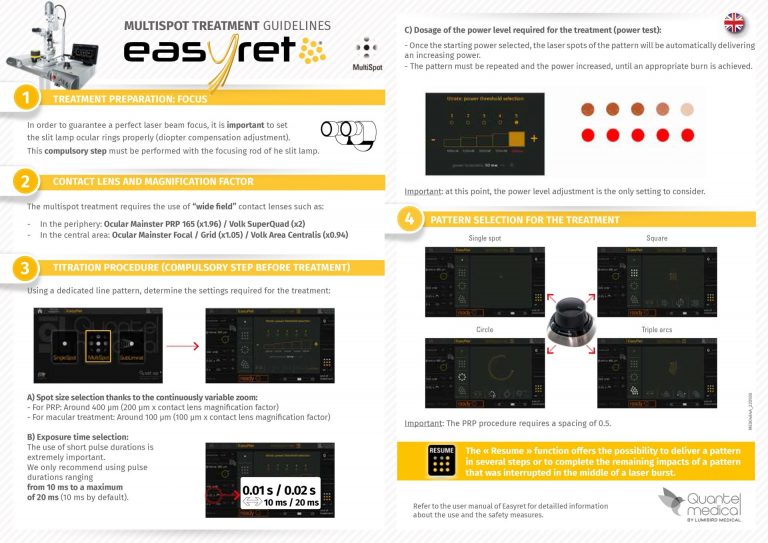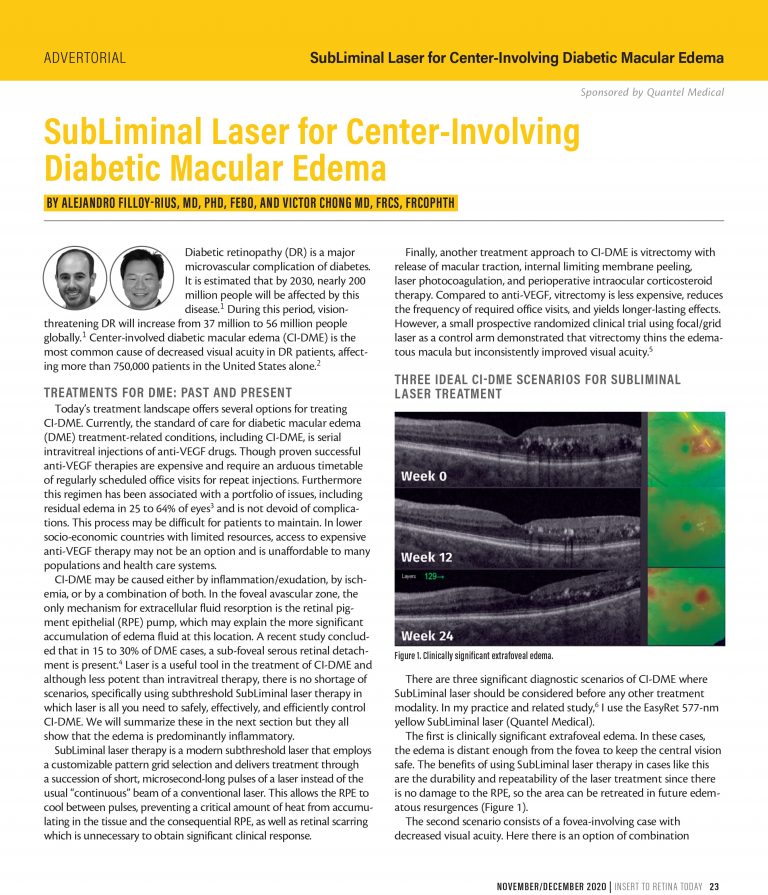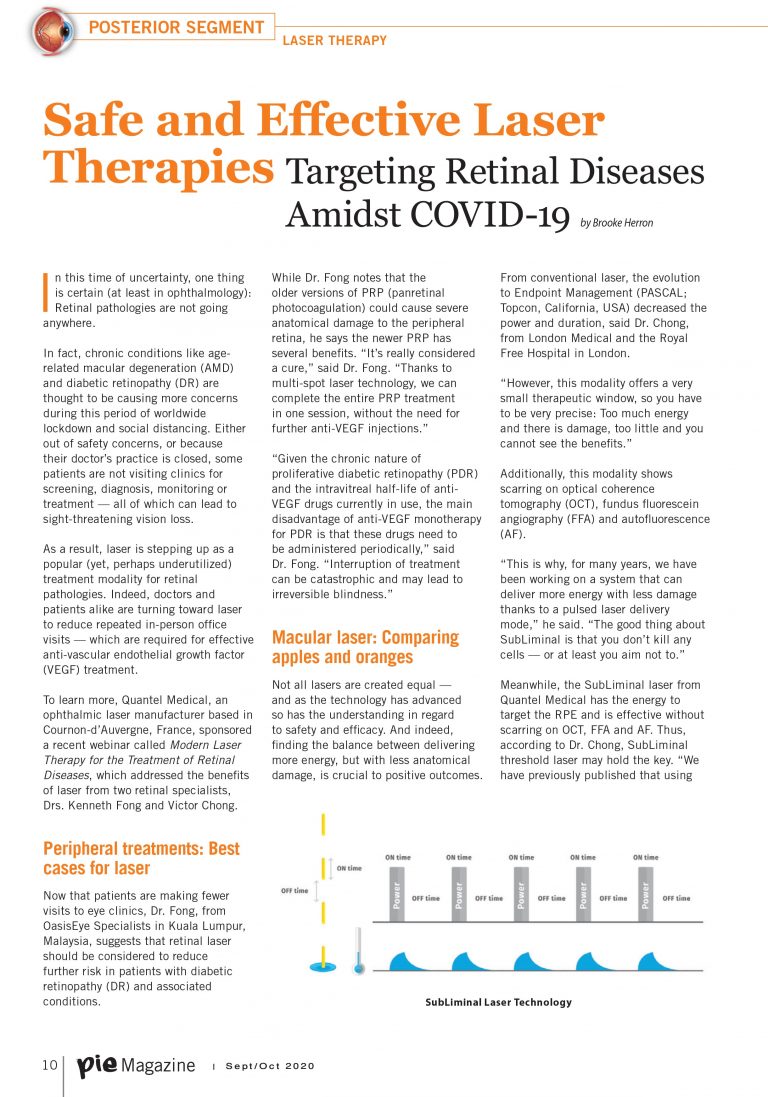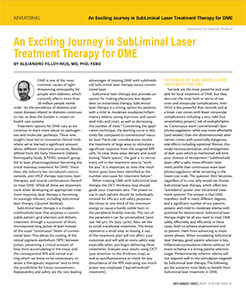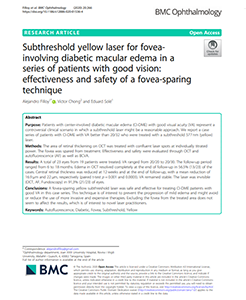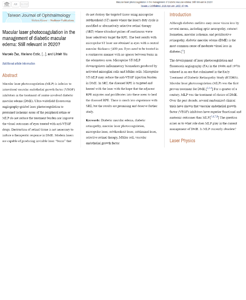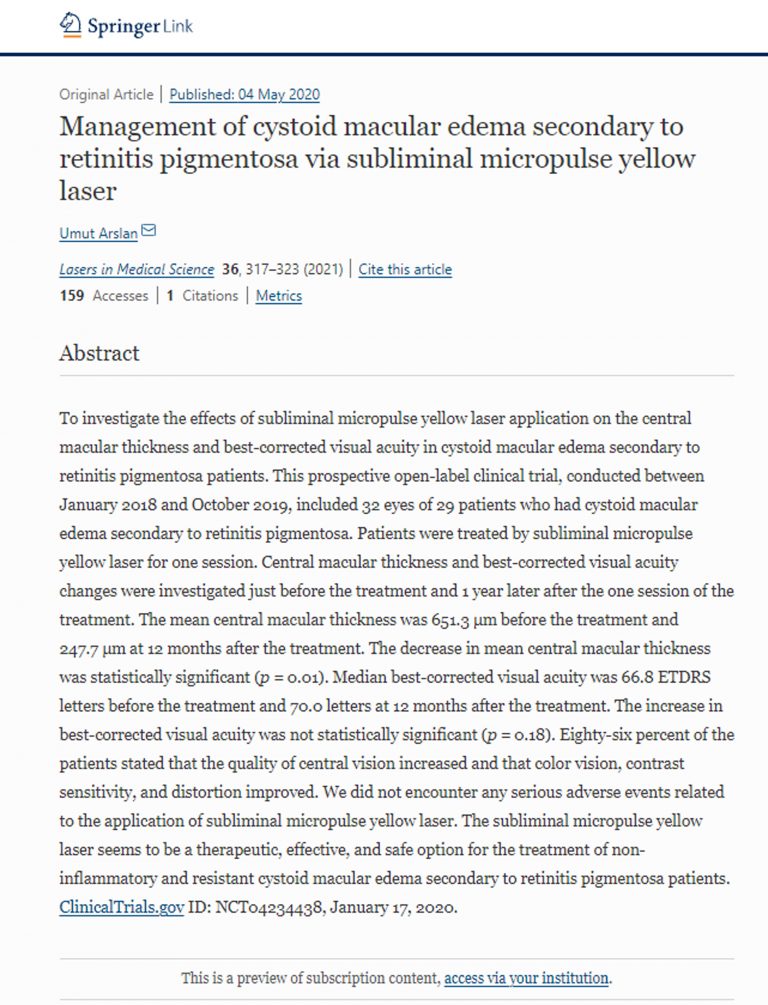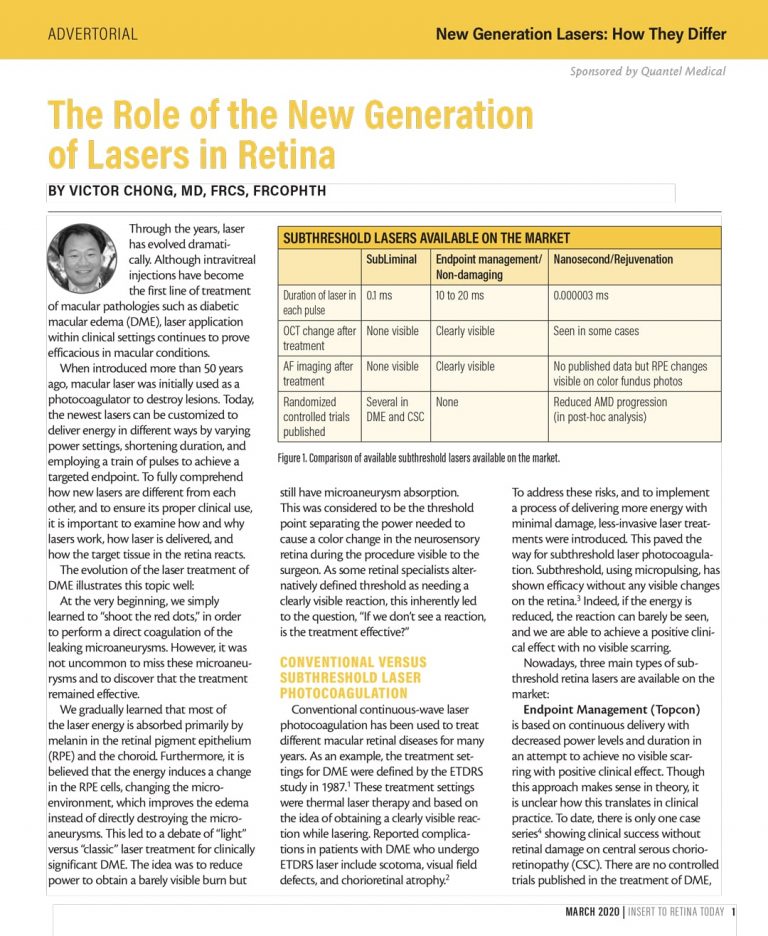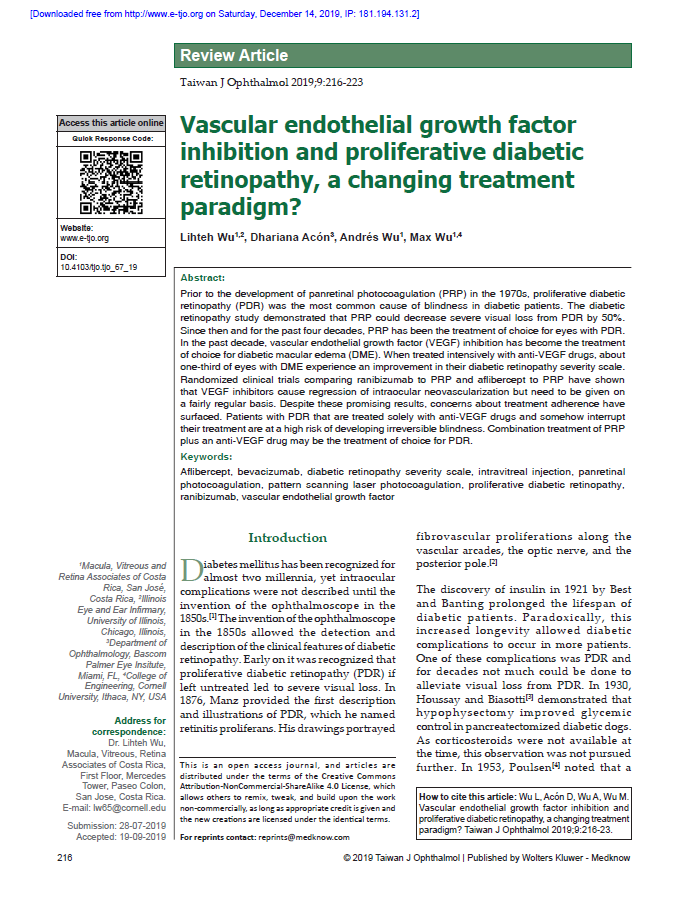- Introduction
- Macular Diseases
- Subliminal laser therapy: a macular treatment
There remains an unmet need in the treatment of macular diseases. Increasing evidence demonstrates SubLiminal laser therapy to be safe and effective for macular conditions such as DME and CSC.
- Peripheral Retinal Diseases
- Subliminal laser therapy: not a peripheral treatment
Several studies demonstrate that retinal destruction was required to control the neovascularization process in PDR. For peripheral conditions Multispot laser photocoagulation should be favored. - Media Library

